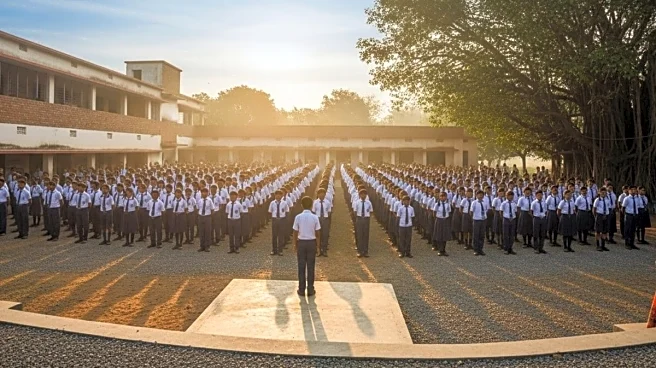The Alaskan town of Utqiagvik (formerly known as Barrow), home to about 4,600 residents, recorded its final sunset of the year on Tuesday (November 18) and entered “polar night”. The polar night is a stretch of roughly 65 days without direct sunlight.
Situated roughly 483 kilometres north of the Arctic Circle, this northernmost community in North America will remain in prolonged darkness because the Northern Hemisphere tilts away from the sun between the September and March equinoxes, causing daylight at far-northern latitudes to gradually fade and reach its extremity around the December solstice.
During this period the only light comes from faint twilight near the southern horizon, and the occasional glow of the Aurora Borealis overhead offers
a small source of illumination.
The next sunrise in Utqiagvik is not expected until January 22, 2026.
Conditions during the polar night are extreme. Temperatures often fall well below zero degrees Fahrenheit, and the absence of sunlight affects daily routines for the roughly 5,000 residents.
Sunset on Tuesday will mark the final appearance of the sun over Utqiagvik, Alaska, in 2025 as the town enters "polar night," a stretch of roughly 65 days of darkness. pic.twitter.com/feZhpIScWh
— AccuWeather (@accuweather) November 18, 2025
However, the darkness is only a phase. As spring approaches, daylight gradually returns, and by mid-May the situation reverses completely. From that point until early August the sun does not set at all, creating a period of continuous daylight. This marks Utqiagvik’s bright summer season, which is the natural counterpart to its long winter night.
The long #PolarNight has begun in the United States' northernmost city—Utqiaġvik, Alaska!
Yesterday, @NOAA's #GOESWest (#GOES18) 🛰️ captured the last sunset of the year in Utqiaġvik. The sun will rise above the horizon again in about 64 days, on January 22, 2026. pic.twitter.com/sp29tcoFJY
— NOAA Satellites (@NOAASatellites) November 19, 2025
In India, even in the coldest places like Drass, Leh or Gulmarg, the sun always rises and sets every day. Winter days may be short, but there is never a period when the sun disappears completely. This is because India lies far from the poles, so the sun’s path is always high enough to cross the horizon.
But in places like Utqiagvik, which lies deep inside the Arctic Circle, the situation is very different. Earth’s tilt pushes the sun so low during winter that it stays below the horizon for weeks, creating the long stretch of darkness known as polar night.
The same phenomenon happens in the Southern Hemisphere, but it is even more dramatic at the South Pole. While Arctic towns face weeks of darkness, the South Pole gets a single night lasting nearly six months because it sits at the exact point where Earth’s tilt has the strongest effect. When the Arctic is dark, the South Pole is in continuous sunlight, and when the Arctic enjoys the midnight sun, the South Pole slips into its half-year night.



/images/ppid_59c68470-image-176355253808486008.webp)
/images/ppid_59c68470-image-176354756736880768.webp)

/images/ppid_a911dc6a-image-176361124190295957.webp)


/images/ppid_59c68470-image-176365752984387790.webp)



/images/ppid_a911dc6a-image-176343704518138333.webp)

/images/ppid_a911dc6a-image-176355142434915884.webp)